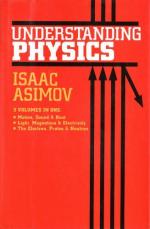|
This section contains 434 words (approx. 2 pages at 300 words per page) |

|
The discovery of the electron by Joseph J. Thomson in 1897 immediately posed a new problem with regard to atomic structure. Since all atoms are neutral, the existence of a negatively-charged electron meant that the atom must also contain positive charges. How were those positive charges carried within the atom?
Thomson tried to answer this question with a "plum pudding" model of the atom. In this model, the positive charges were smeared uniformly throughout the total volume of the atom with the electrons embedded in the positive charge. Ernest Rutherford's gold foil experiment a decade later showed, however, that the positive charge of the atoms was concentrated in its core (the nucleus) so that Thomson's model could not be correct. But what was the structure of the nucleus?
A possible answer to this question lay in the discovery of " canal rays" by Eugen Goldstein in 1886. These canal rays had...
|
This section contains 434 words (approx. 2 pages at 300 words per page) |

|


